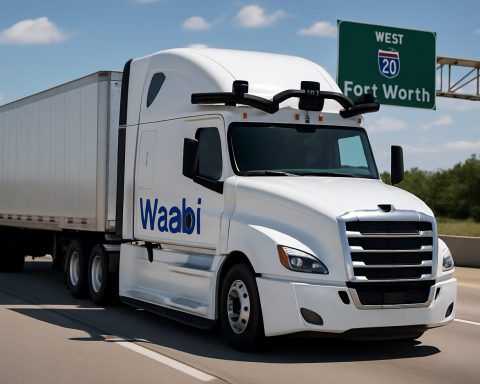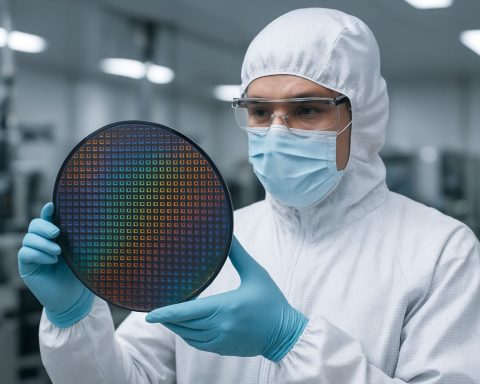- Sodium-ion batteries, once deemed impractical for EVs, are gaining prominence through CATL’s innovations.
- These batteries excel in cold climates, maintaining performance despite freezing temperatures.
- Sodium is abundant and environmentally friendly, offering a sustainable and potentially cost-effective alternative to lithium.
- CATL’s high-voltage sodium-ion batteries achieve 175 watt-hours per kilogram, suitable for compact EVs and hybrids.
- Sodium-ion technology enhances safety and reliability, with rigorous testing against extreme conditions.
- These batteries offer vehicle-to-load capabilities, adding practical benefits like powering devices on-the-go.
- CATL plans mass production by mid-next year, aiming to change the EV landscape and improve winter performance.
In the fast-evolving realm of battery technology, a surprising contender is emerging from the shadows: sodium-ion batteries. Long considered impractical for electric vehicles, these batteries have now captured the spotlight thanks to groundbreaking advancements by the Chinese battery titan CATL. Their unveiling of the first mass-produced sodium-ion batteries marks a pivotal moment, promising to transform how we think about powering vehicles, especially in icy terrains.
Imagine driving an electric vehicle across the frigid landscapes of Northern China, undeterred by the freezing temperatures that typically sap the life out of traditional lithium-ion batteries. This scenario is now a reality. CATL’s sodium-ion technology boasts the ability to forge ahead where others falter, maintaining speeds up to 75 miles per hour even as conventional charging indicators plunge to zero.
While these sodium-ion batteries don’t quite match the energy density of their lithium counterparts, they offer a unique set of advantages. Abundant and environmentally benign, sodium is a thousand times more plentiful than lithium, allowing for a more sustainable and potentially less expensive alternative. It’s a chemistry well-suited to cold climates, where its temperature resilience shines—allowing ions to move freely even amid Arctic chills.
CATL’s sodium-ion models, including both high-voltage for electric vehicles and low-voltage versions for heavy-duty trucks, deliver solid performance metrics. The high-voltage variant provides a reasonable 175 watt-hours per kilogram energy density, enough for compact electric vehicles and hybrids, achieving impressive ranges in mild conditions.
Safety stands paramount in this breakthrough. CATL has subjected their sodium-ion packs to rigorous tests, challenging their endurance with drills and crushing forces, all without catastrophic failure. The innovation extends to practicality, too. The low-voltage models empower truckers with crucial backup energy, freeing them from the burden of unreliable lead-acid batteries. With vehicle-to-load capabilities, they can even brew a hot coffee on-the-go, defying the harshest frosts.
The advent of sodium-ion batteries signals a new chapter in the electric vehicle narrative. By the middle of next year, CATL plans to bring this vision to life with mass production. As the electric vehicle landscape continues to evolve, CATL’s sodium-ion innovation might just be the spark that electrifies the path forward. A world where EVs effortlessly conquer winter’s chill could soon be more than just an aspiration—it could become an expectation.
Why Sodium-Ion Batteries Are the Future of Electric Vehicles
Unveiling the Potential of Sodium-Ion Batteries
In the rapidly advancing field of battery technology, sodium-ion batteries are emerging as a promising alternative to traditional lithium-ion solutions. Chinese leader CATL has announced a breakthrough in developing these batteries for mass production, showcasing their capability especially in colder climates.
Key Advantages of Sodium-Ion Batteries
1. Abundance and Cost-effectiveness: Sodium is one of the most abundant elements on Earth, which makes it significantly cheaper and more environmentally friendly compared to lithium. This abundance could lead to lower overall production costs and more sustainable supply chains.
2. Temperature Resilience: One of the standout features of sodium-ion batteries is their ability to perform in extremely cold conditions. Unlike lithium-ion batteries, which suffer performance degradation in low temperatures, sodium-ion technology maintains efficiency, making them ideal for locations with harsh winters, like Northern China.
3. Safety and Durability: CATL has demonstrated that sodium-ion batteries are more resistant to rigorous conditions. They’ve been subjected to intense stress tests, including drills and crushing forces, without experiencing catastrophic failures, ensuring higher safety standards.
Limitations to Consider
– Energy Density: Sodium-ion batteries currently offer a lower energy density compared to lithium-ion batteries, with a reported 175 watt-hours per kilogram. This makes them more suited for compact electric vehicles and hybrids rather than long-range electric cars.
– Industry Readiness: While CATL is leading the charge with sodium-ion technology, the industry as a whole may take time to adapt to this new paradigm. Mass production is anticipated by the middle of next year, but widespread adoption may take additional time.
Real-World Use Cases and Industry Trends
– Cold Climate Adaptation: With the ability to maintain performance in subzero temperatures, sodium-ion batteries are perfect for regions where EVs often struggle, enabling electric vehicles to operate reliably.
– Heavy-Duty Applications: The low-voltage sodium-ion batteries are ideal for heavy-duty trucks that require consistent and reliable power, providing a superior alternative to traditional lead-acid batteries.
Market Forecast
As climate objectives become more pressing, industries are seeking sustainable alternatives. With sodium-ion batteries emerging as a viable solution, we can expect substantial investments and growth in this sector.
According to CNCB, trends suggest the global shift to more abundant, less environmentally taxing resources like sodium may drive innovation and investment in the coming years, potentially leading to market disruptions akin to the shift from nickel-cadmium to lithium-ion in the past.
FAQs and Actionable Insights
– How do sodium-ion batteries compare to lithium-ion in cost?
Sodium-ion batteries are potentially more cost-effective due to the abundance of sodium and simpler extraction processes.
– Will I have to replace my current lithium-ion battery with sodium-ion?
Not immediately. While sodium-ion technology is promising, lithium-ion remains dominant for now. Future EV models may gradually offer sodium-ion options.
– What are the environmental benefits of sodium over lithium?
Sodium is abundant and more environmentally friendly to extract, reducing overall environmental impact.
Quick Tips for EV Enthusiasts
– Stay Updated on Battery Developments: With technological advancements continually reshaping the EV landscape, keeping abreast of the latest battery innovations will help prospective buyers make informed decisions.
– Consider Climate: If you live in colder regions, sodium-ion-powered EVs may offer better performance and reliability in low temperatures.
– Monitor Industry Changes: As more companies invest in sodium-ion technology, the market may see a shift that could influence future purchasing choices.
For more on sustainable innovations and technological advancements, visit CNN and Bloomberg.












